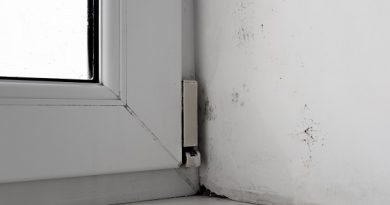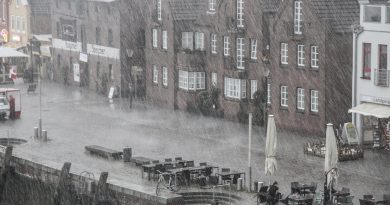10 Signs of really expensive Building Envelope failure
So we all learned a lot from the Building Envelope – Water Damage from Outside article. These concepts are helpful for visualizing what is going on inside the building envelope system. Now let’s move on to something more practical. Here are a few signs that are screaming out to you for attention. If you don’t deal with these, the cost might grow exponentially.
1.Do you have a scheduled maintenance program in place?
Building materials expand and contract. Land settles. Occuments activities bring moisture in and out. Everything in your building moves, and nothing is constant. We cannot expect to build something that can last forever without maintenance. If you don’t have a scheduled maintenance program in place, then you won’t know there is damage done until it’s too late.
2.You smell something musty in enclosed area of your home.
Mold, fungi, and mildew usually grow in locations we cannot easily see. A big indicator for them is the smell. The smell will be subtle and easily aired out at first, so the best way to check is opening the door that has been closed for a while. They are likely to appear in wet and warm area. Make sure to ventilate your bathroom properly after shower. When you do smell it, check your damp towels and foot mat first. Then check the backsplash. Majority of the time, these smells come from your caulking or backsplash. Nook and crannies around water source are the usual suspect.
3.Soft wooden floor
When you feel soft wooden floor, it’s already too late for the floor structure. This usually happens first on the deck because they are less protected. Before the structure become soft, you can see signs of the wood surface being wet. This is a good indication that the structure is not being vented properly. The moisture will create habitat for harmful organisms using wood as a nutrition.
4.Hollow wooden post at the bottom
A structural post has to be correctly detailed. Your authority having jurisdiction will check the proposed detail for your deck. I have seen cases where the contractor with poor construction knowledge stake the 6×6 post directly into the soil. Twenty Years later, the moisture from soil rotted the wood from the bottom. Eventually the post cannot support the deck’s weight and the whole thing collapsed. The bottom of the post should be the first thing you check for a healthy deck.
5.Water flowing out from the overhang
All roofs have built-in water diversion system. A flat roof has internal drainage system. A sloped roof diverts water to the perimeter of the overhang into the gutter. Then the gutter leads water into rainwater leader down into the perimeter drainage. If you have water flowing out of the gutter, that means the gutter is clogged. Climb up to the side of the building to clean your gutters to prevent this. An overfilled gutter may be directing water towards your roof structure.
6.Flaky paint, peeling paint, cracked paint
Paint is supposed to create a film on the surface applied. Damaged paint can be due to a few factors, moisture, extreme temperature, and substrate movement. The paint may have been applied onto wet surfaces. The evaporation creates bubbles to weaken the paint. Regardless of how the damage appeared, cracked paint allows water to enter your building and trap them inside. When you are dealing with cracked paint, remember to check the moisture content of the structure before repainting.
7.Cracking or missing sealant.
Sealant and caulking can be seen around the transitions of elements. Namely windows, doors, hose bib, dryer vent, and expansion joints, etc. They are forgiving materials that can contract when adjacent materials expand and vise versa. The use of incorrect caulking may cause the caulking material unable to perform properly. When this happens, building movements may crack the sealants. We don’t want gaps on the walls to allow water in. Sealants are usually located at building transitions so it can cause a lot of damage if outdoor environment gets in.
8.Water stains inside walls or ceiling.
Stains on drywalls don’t appear out of nowhere. If you see stains it is a good indication that there are water behind it. You won’t know where the water is coming from because you are only seeing the lowest point in the structure. If you are dealing with water in your attic space, the water is probably under the insulation. Usually it’s in the dip on your ceiling drywall. It is almost impossible to pin-piont the leak origin for repair.
9.White powder inside of concrete wall
Efflorescence usually appear in the form of white powder on the interior side of concrete wall. It indicates water from outside moving through the concrete. The white powder is salt content inside concrete after water evaporates. This usually indicates damage to the water membrane, and there are water corroding your concrete and steel rebar. The easiest way is to dig around the building to repair waterproofing membrane before structural failure.
10.Water pooling on horizontal surfaces like deck/flat roof/ or balcony.
Any horizontal elements you see on the exterior of your building has at least 2% slope. Usually it slopes away from the building, and 2% should be enough to divert water. Sometimes, when the structure is not supported properly, or something heavy settled a portion of the deck may create a low point on the deck. When the structure has deformed from its original intended design, water can no longer shed properly. If there are any cracks on the surface material where the water is pooling, then there is likely water in your structure. It is best to hire an experienced contractor to dry the internal structure and reinstate proper slope to prevent further damage.
11.Curled asphalt shingle joints.
Asphalt Shingles is one of the cheapest roofing materials you can get. They are thin layers of bituminous materials layered to shed water. Under normal circumstances, water gets diverted into the gutter and flow into the ground. When the temperature gets cold, water can freeze around the seams between shingles. Water expand when transforming from liquid to ice. The expansion can curl the shingles a little bit more every winter season to compromise roof shingle’s function. If you see moss growth around these lifted shingles, do not clean them. The only way is to replace your roof shingles.
Fun Fact, the moss and dirt is actually acting as caulking to protect your roof structure. Yes, they will keep growing and the space will become larger. Cleaning them will actually make matters worse by creating openings for water to get in.
12.Diagonal cracks at the corner of exterior opening
We all know building moves due to expansion and contraction. Sometimes we see cracks on the exterior wall’s stucco. If you see horizontal or vertical cracks. This usually indicates cracks from expansion. Which is normal. However, if you see diagonal cracks from the edge of openings. You may be dealing with something very expensive. Openings on the wall is the weak point of the structure. The studs are usually doubled with a header above to carry the load. Under normal circumstances, the header should be able to carry the load down to the vertical studs. Diagonal crack can mean that your header is not adequately supported. You should hire a structural engineer.
If you see any of these symptoms, do not hesitate. Determine the cause and take action immediately to rectify the situation. It may only cost you a few thousand dollars if you act fast. A delayed repair cost may grow exponentially towards a couple hundred thousand dollar bill later on.




